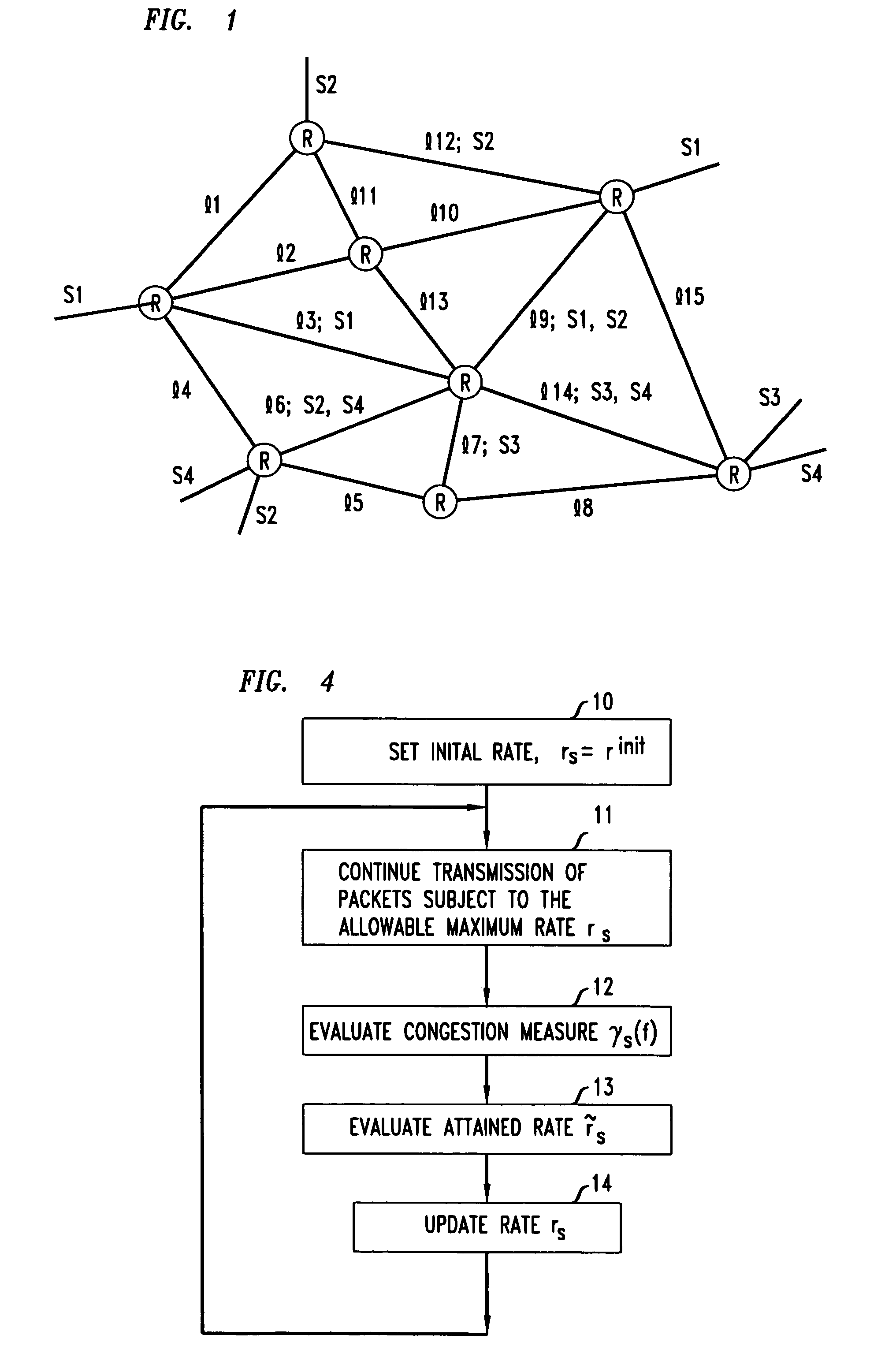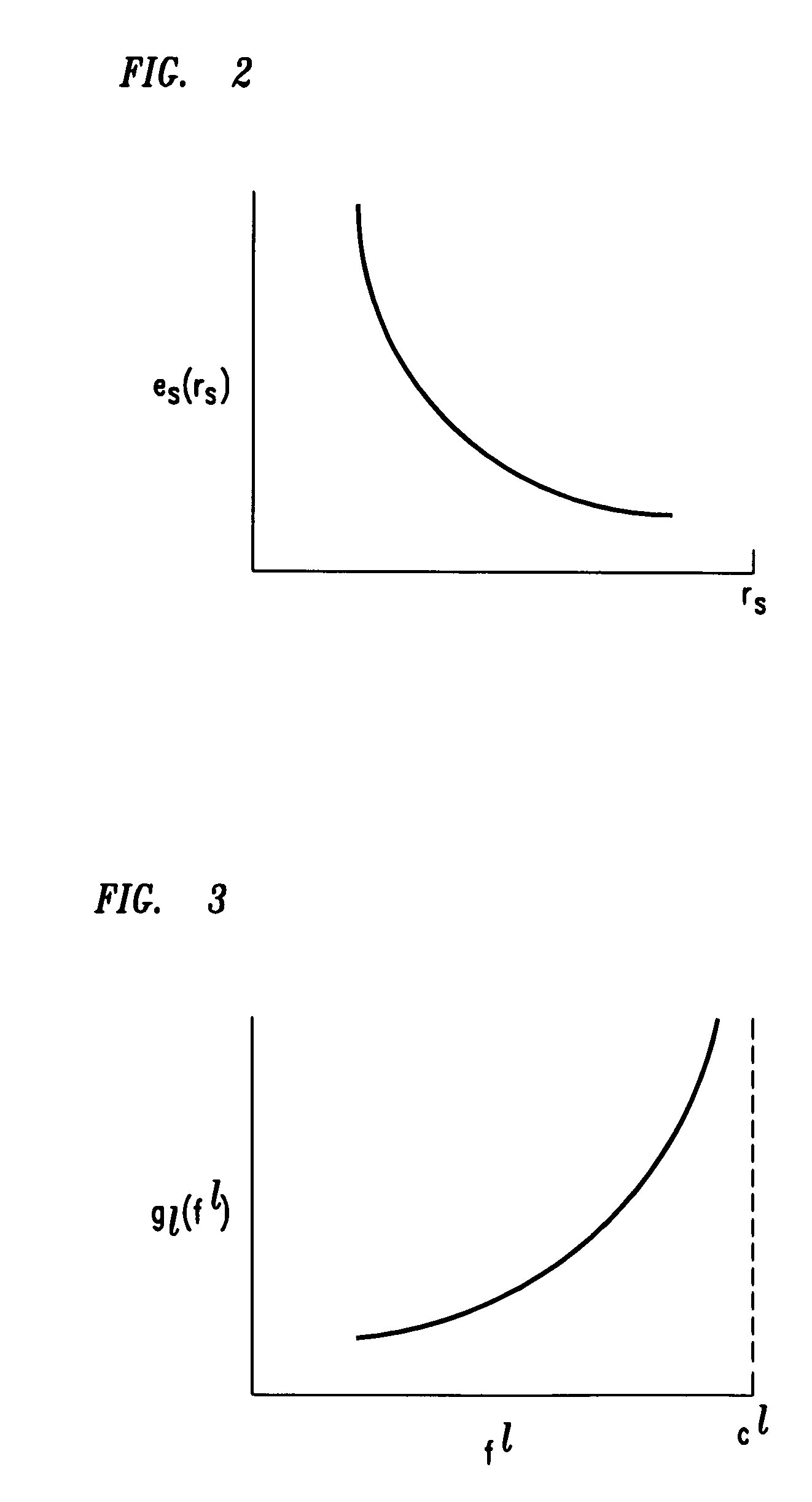End-to-end internet control
a technology of internet control and end-to-end connection, applied in data switching networks, frequency-division multiplexes, instruments, etc., can solve problems such as difficult problems, difficult to apply control approaches based on more sophisticated service disciplines, and difficult to control packet networks
- Summary
- Abstract
- Description
- Claims
- Application Information
AI Technical Summary
Benefits of technology
Problems solved by technology
Method used
Image
Examples
Embodiment Construction
[0011]The dynamics of a network congestion control strategy can span multiple time scales. On the fastest time scale, congestion control provides protection against sudden surges of traffic by quick reaction to buffer overloads. The reaction time in this type of control is, at best, on the order of one round-trip delay, since that is how fast news of congestion can reach a source node and the response to it propagate back to the trouble spot. On a slower time scale, congestion control could mean gradual but steadier reaction to the build-up of congestion, as perceived over a period involving tens, or hundreds, of round-trip times. It is on this time scale that notions such as the average transmission rate of a session, rate allocation, and fairness become meaningful. This disclosure addresses itself to this quasi-static congestion control, where the control time scale is the “medium-term” tens, or hundreds, of round trip times.
[0012]A window scheme for end-to-end congestion control ...
PUM
 Login to View More
Login to View More Abstract
Description
Claims
Application Information
 Login to View More
Login to View More - R&D
- Intellectual Property
- Life Sciences
- Materials
- Tech Scout
- Unparalleled Data Quality
- Higher Quality Content
- 60% Fewer Hallucinations
Browse by: Latest US Patents, China's latest patents, Technical Efficacy Thesaurus, Application Domain, Technology Topic, Popular Technical Reports.
© 2025 PatSnap. All rights reserved.Legal|Privacy policy|Modern Slavery Act Transparency Statement|Sitemap|About US| Contact US: help@patsnap.com



